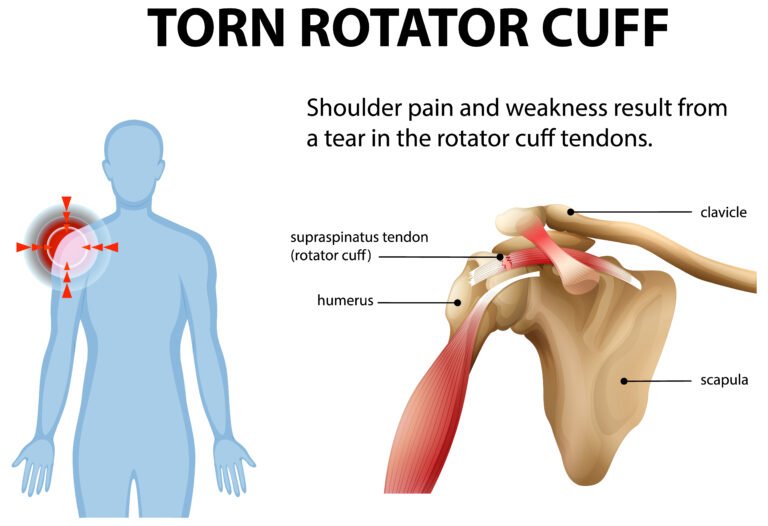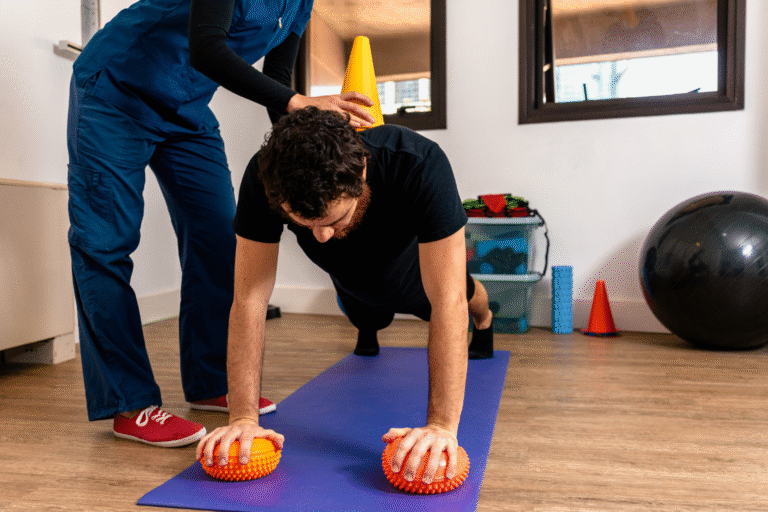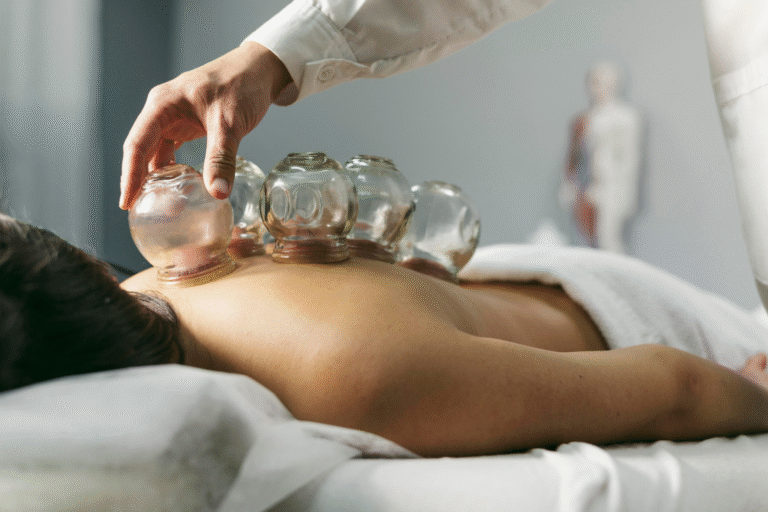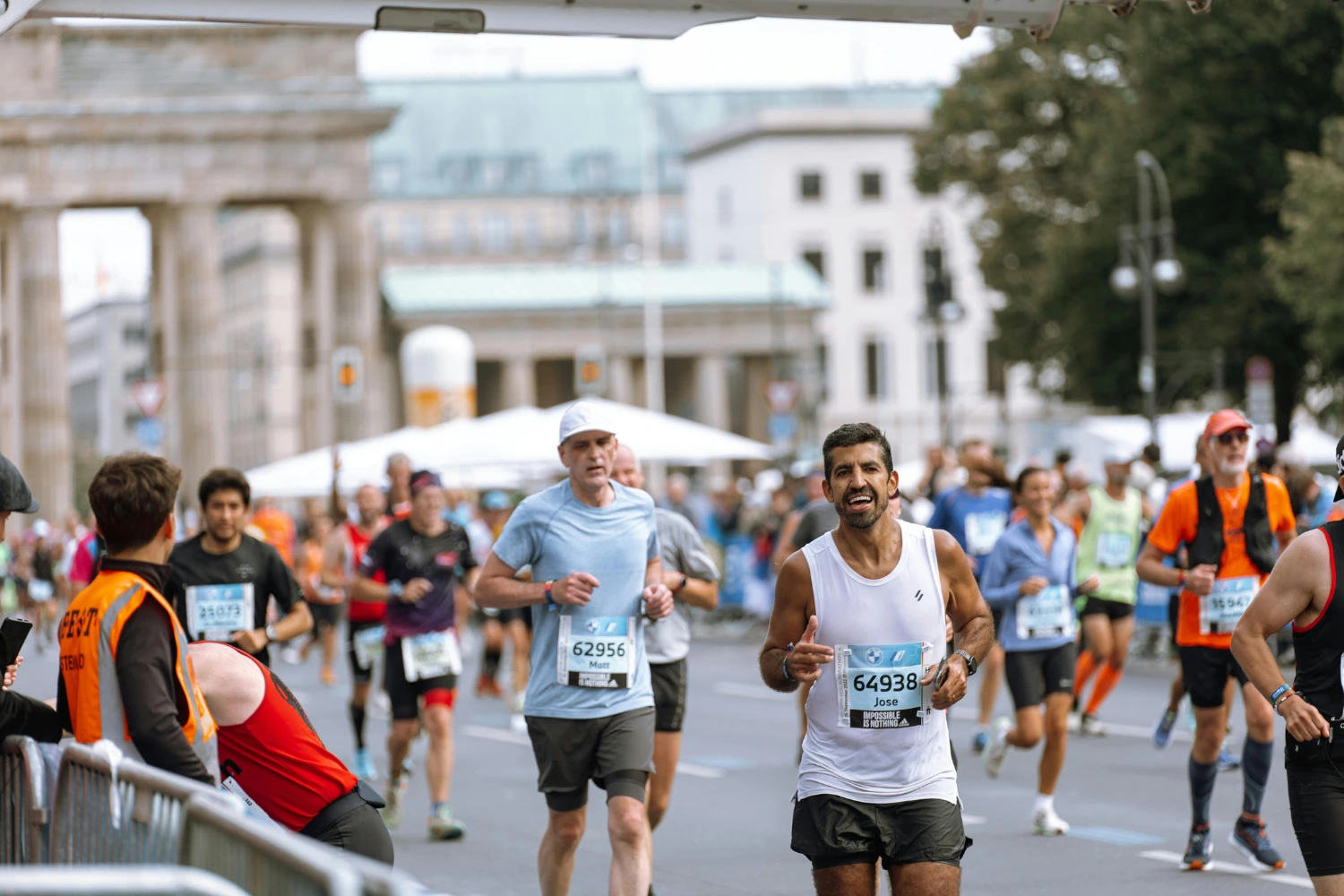
Common Manchester Half Marathon Injuries (And How to Avoid Them Before October 12th)
If you’ve been following your training plan consistently, your long runs are probably getting easier, your pace is improving, and October 12 at Old Trafford feels within reach. Still, even a slight twinge in your knee, tightness in your calf, or a dull ache in your shin could be a warning sign to pay attention to as the Manchester Half Marathon approaches.
Research shows that up to 25% of runners drop out of races because of injury, with studies consistently finding that knee, ankle, and lower leg issues make up the majority of running-related problems. The frustrating part is that most of these injuries are entirely preventable with the right approach.
With just five days to go until the Manchester Half Marathon, there’s still time to address potential problems before they disrupt your race-day plans, but you’ll need to act fast.
Why the Manchester Half Marathon Training Can Create Injury Risk
Half-marathon training puts your body under sustained stress that builds week after week. You might start your training block running 15-20 miles per week and gradually build to 30-40 miles during peak weeks. That’s a massive increase in cumulative load on your muscles, tendons, and joints.
The Manchester Half Marathon course might be flat and fast, but that doesn’t make it easier on your body. Running 13.1 miles on hard pavement creates repetitive impact forces that accumulate over thousands of steps. Your calves absorb shock with every foot strike, and your hip flexors work overtime to drive your legs forward.
When any link in this chain becomes overworked or develops dysfunction, injuries follow. It is important to detect these problems early, before they force you to the sidelines.
Here are 5 of the most common injuries many athletes struggle with at the October 12th Half-marathon event.
The 5 Most Common Manchester Half Marathon Injuries
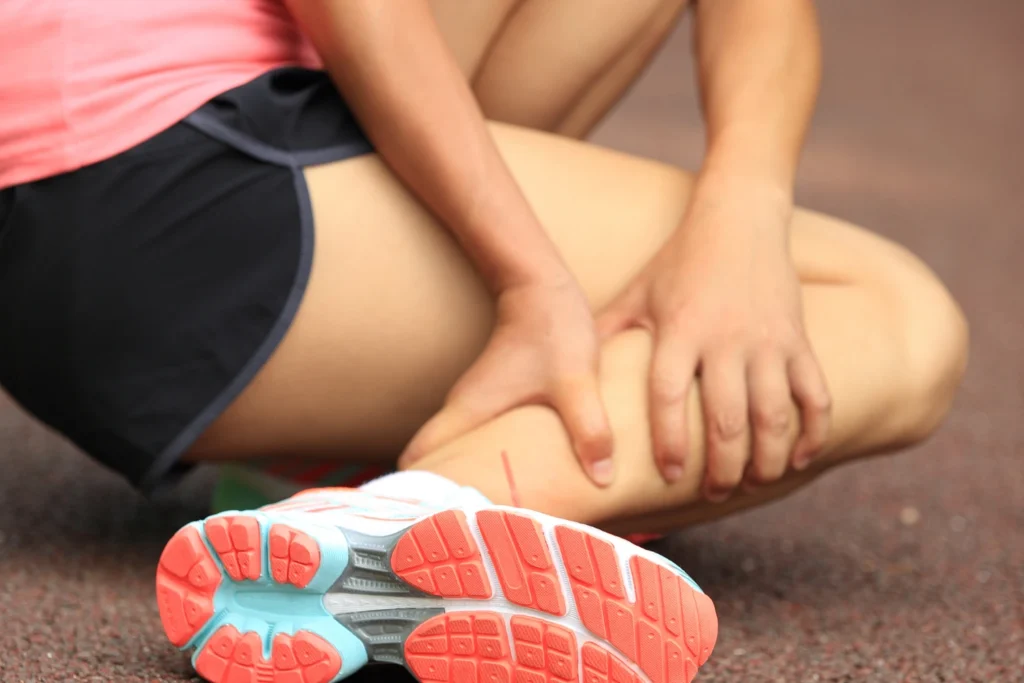
1. Runner’s Knee (Patellofemoral Pain Syndrome)
That nagging pain around or behind your kneecap affects more half-marathon runners than any other injury. The knee accounts for the highest proportion of injury incidence among runners, and runner’s knee is the most common culprit.
The pain usually starts as a dull ache during runs and can progress to sharp pain when climbing stairs or sitting for long periods. Many Manchester runners first notice it during their longer training runs.
It is caused by weak hip muscles, poor foot mechanics, or muscle imbalances that cause your kneecap to track incorrectly. When your glutes and hip stabilizers aren’t strong enough, your knee takes on extra stress it wasn’t designed to handle.
How to prevent it?
- Strengthen your glutes and hip muscles with targeted exercises
- Address any biomechanical issues with proper foot support
- Gradually increase training volume instead of sudden jumps
- Get regular sports massage to maintain hip and quad muscle quality
If you’re already feeling knee discomfort with October 12th approaching, addressing it now can make the difference between finishing strong and limping through the final miles.
2. IT Band Syndrome
The iliotibial band runs down the outside of your thigh from hip to knee. When it gets tight and irritated, you’ll feel sharp pain on the outer side of your knee that can stop you mid-run.
IT band issues often develop around weeks 6-8 of training when cumulative mileage starts adding up. The pain might disappear when you rest, but it comes roaring back once you start running again.
Sitting at a desk all day before your evening training runs creates hip tightness that compounds the problem.
How to prevent it?
- Focus on hip strengthening, particularly the hip abductors
- Maintain proper running form and avoid overstriding
- Address hip and glute tightness through regular treatment
- Increase weekly mileage by no more than 10% per week
Sports massage targeting the hip, glute, and outer thigh can help release tension before it develops into full IT band syndrome. Many Manchester runners find that bi-weekly sessions during peak training prevent this issue entirely.
3. Plantar Fasciitis
That stabbing heel pain when you first get out of bed signals plantar fasciitis. The thick band of tissue running across the bottom of your foot becomes inflamed from repetitive stress.
For Manchester Half Marathon runners, this often develops when training volume increases too quickly or when running in worn-out shoes. The condition can linger for months if not addressed properly. Office workers who go from sitting all day to high-impact running are particularly vulnerable.
How to prevent it?
- Strengthen your feet and calves through targeted exercises
- Replace running shoes every 300-400 miles
- Use proper arch support during training
- Address calf tightness before it affects your plantar fascia
Regular calf massage can prevent the muscle tightness that often triggers plantar fasciitis. If you’re already experiencing heel pain, combining sports massage with proper foot mechanics support gives you the best chance of racing pain-free on October 12th.
4. Shin Splints
Pain along the inner edge of your shinbone affects many half-marathon runners, especially those new to the distance. The discomfort starts early in running and can progress to pain that persists even when you’re not running.
Doing too much too soon is the primary culprit. Weak calf muscles, poor running form, or training on hard surfaces without adequate conditioning can lead to shin splints.
How to prevent it?
- Build mileage gradually with rest days between hard efforts
- Strengthen your calves and anterior tibialis muscles
- Vary your running surfaces when possible
- Address muscle imbalances through regular treatment
If shin splints are already bothering you, there’s still time to address them before race day. Sports massage focusing on your lower legs can help restore normal muscle function and reduce inflammation.
5. Achilles Tendinitis
Tightness, pain, or stiffness in your Achilles tendon typically develops gradually. You might first notice it as morning stiffness that improves as you move around, then progresses to pain during and after runs.
If left unaddressed, Achilles problems can become chronic and take months to resolve. It is caused by sudden increases in training volume or intensity, tight calf muscles, poor foot mechanics, or inadequate recovery between hard efforts.
How to prevent it?
- Increase training load gradually and consistently.
- Maintain calf flexibility through regular stretching and treatment
- Include rest days and easy runs in your schedule
- Avoid sudden changes in running shoes or terrain
With October 12th approaching, catching this early is important. Regular maintenance keeps this entire chain functioning properly.
Warning Signs That Show You Are Prone to Injury at The Manchester Half Marathon Event This Year?
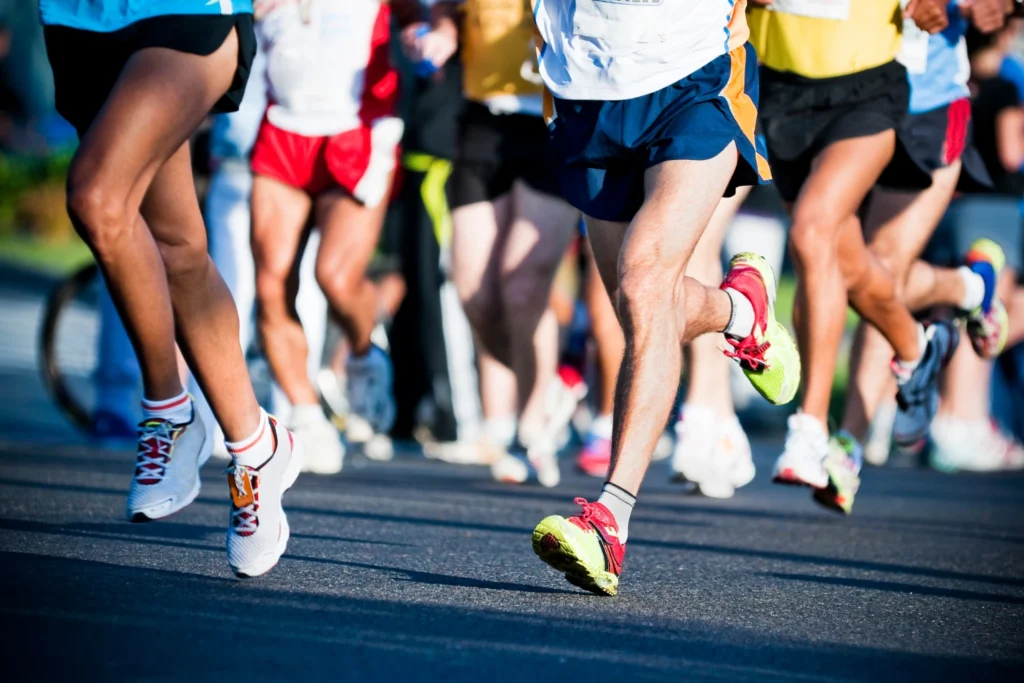
Pain during training is your body’s way of communicating that something needs attention. However, there is a difference between normal training discomfort and potential injury.
Normal training discomfortmay mean general muscle soreness that improves with movement, fatigue that resolves with rest days, or mild stiffness after long runs that disappears within 24-48 hours. If you’re experiencing any warning signs with October 12th approaching, getting a professional assessment now gives you the best chance of making it to the start line healthy.
Warning signs of developing injury:
- Pain that gets worse during a run instead of improving
- Discomfort that persists beyond 48 hours after training
- Pain that changes your running form or stride
- Symptoms that keep you awake at night
- Swelling, redness, or heat in affected areas
Time Is Running Out: Your Pre-Race Action Plan for the Manchester Half Marathon 2025
With 5 days remaining until the Manchester Half Marathon, you’re in a critical window. Minor issues can still be addressed and resolved before they become serious, but ignoring warning signs at this stage almost guarantees race day disappointment.
Research shows that previous running injuries and undertraining significantly increase race-related injury risk. If you’ve dealt with any of these injuries before, they’re more likely to flare up during the stress of race preparation.
The runners who make it to Old Trafford feeling strong and ready are the ones who treat injury prevention as seriously as their training plan. They address problems early, maintain their bodies through the training process, and don’t wait until pain forces them to stop running.
Here’s what Manchester runners should focus on in the remaining weeks before October 12th:
If you’re currently pain-free: Continue your smart training practices. Consider bi-weekly sports massage to maintain muscle quality and catch any developing issues early. These preventive sessions often reveal tight spots or imbalances before they become painful.
If you’re dealing with minor discomfort: Address it now while there’s still time. Book an assessment to identify the underlying cause and get targeted treatment. Combining sports massage with the right corrective exercises can resolve many issues within 2-3 weeks.
If you’re managing significant pain: Get a professional evaluation immediately. You might need to modify your training plan, but with the right treatment approach, you could still make it to race day. Waiting will only make things worse.
We’re offering £15 off sports massage treatments for registered Manchester Half Marathon runners because we know how much work you’ve put into your preparation. Your training has been building toward October 12th, and injury prevention support ensures those months of effort pay off.
Hekas Can Help You Make It to Old Trafford Healthy
A DNS (did not start) wastes your entry fee, months of training, and the experience you’ve been working toward. A painful race where you’re managing injury instead of enjoying the atmosphere defeats the purpose of participating.
Compare that to proactive maintenance. Regular sports massage during peak training weeks helps identify and address problems before they become injuries. The investment in staying healthy typically costs less than dealing with injuries reactively.
Many Manchester runners discovered that what they thought was “normal training pain” was actually an early warning sign. October 12th should be a celebration of your training, not a painful struggle to the finish line. The difference often comes down to how you handle the final weeks of preparation.
Your training plan tells you when to run and how far. But it probably doesn’t include specific guidance on maintaining your body through the cumulative stress of increasing mileage. That’s where professional support makes the difference.
Book your assessment with best sports massage therapists in Manchester today and take advantage of our £15 discount for Manchester Half Marathon runners. The countdown to October 12th is on, and injury prevention work done now pays off when you’re running strong through Chorlton, Sale, and back to Old Trafford.
Your race day experience depends on reaching the start line healthy, ready, and confident that your body can handle 13.1 miles of racing. There’s still time to make that happen.

